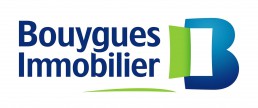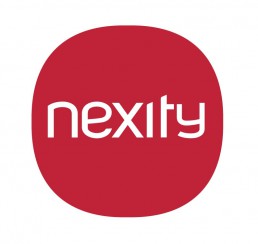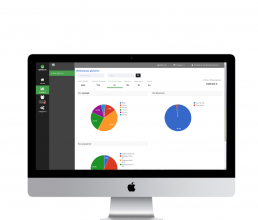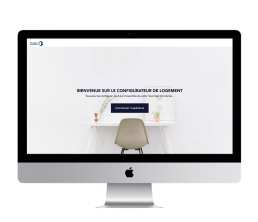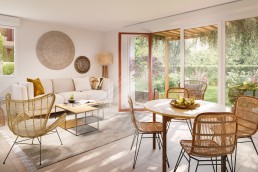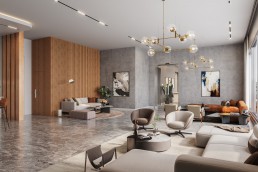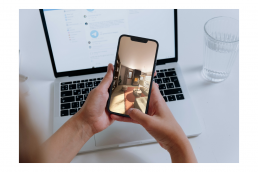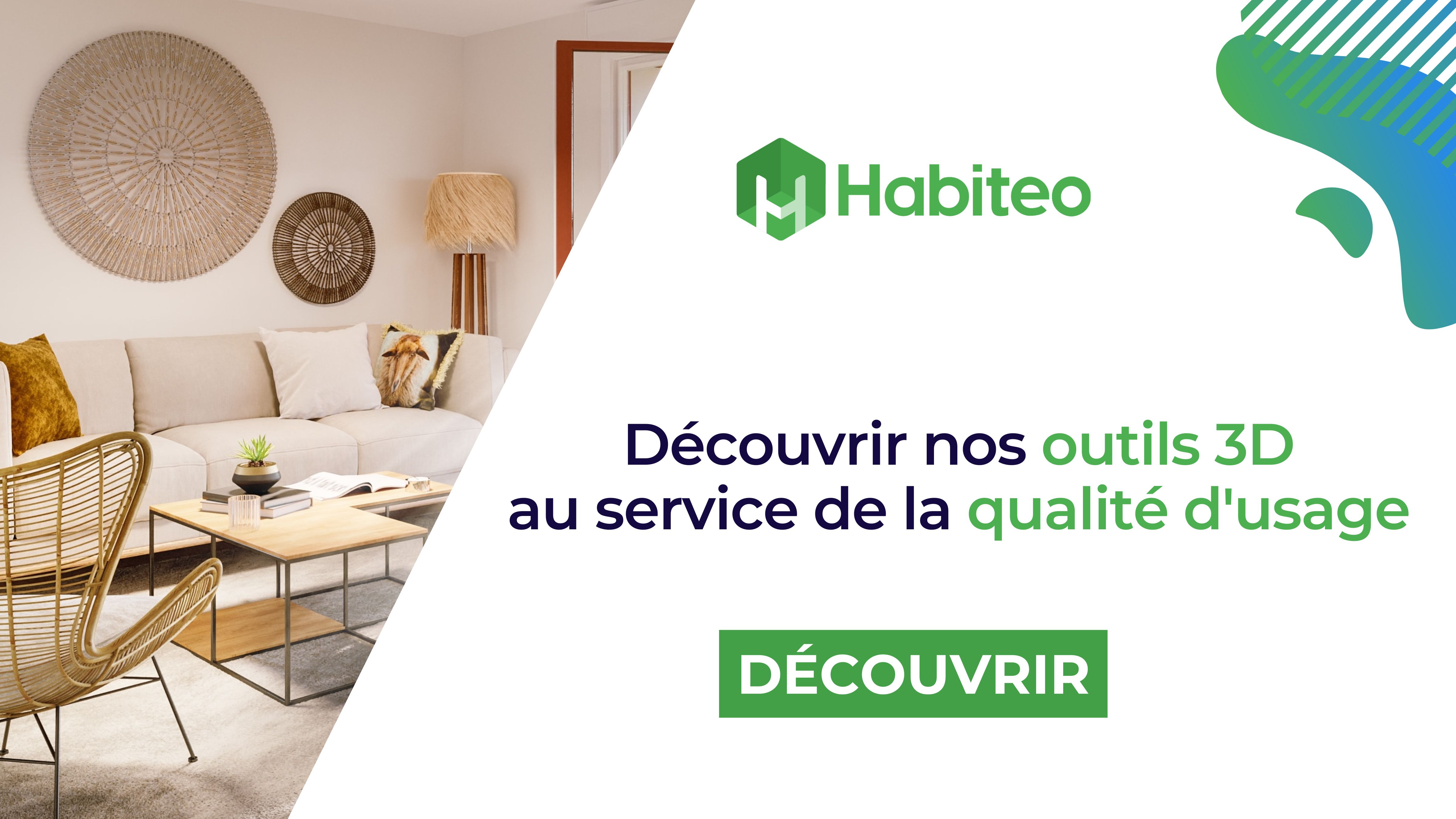Habiteo construit des solutions 3D full web pour optimiser la promotion et la commercialisation de l'immobilier neuf
Étape 1 : Modélisation
Développez votre marque et votre visibilité
Plan 3D, visites virtuelles, maquette 3D… Chez Habiteo, nous sommes persuadés que la réalité virtuelle est l’avenir de l’immobilier, mais que si elle est connectée directement à des outils de commercialisation, elle devient incroyablement puissante, accélère votre rentabilité et optimise votre croissance.
Étape 2 : myHabiteo
Pilotez l'ensemble de votre activité ventes et marketing
Qu’il soit internaute, lead, réservataire ou acheteur final, pouvoir suivre le parcours de vos clients n’est pas chose facile. Avec myHabiteo, vous pilotez la performance de vos actions marketing et commerciales sur une seule plateforme en temps réel pour accroitre votre rentabilité et vos parts de marché.
Étape 3 : Configurateur
Optimisez vos marges et investissements
Dans le neuf pouvoir se projeter dans son futur logement c’est essentiel mais pouvoir le personnaliser c’est encore mieux. Avec le configurateur Habiteo proposez à vos clients une expérience innovante qui les rassure dans leur achat et vous permet de développer vos catalogues matériaux à moindre effort.
Étape 4 : Habiteo Truck
Accélérez votre cycle de vente
Les nouveaux modes de consommation nous obligent à répondre à une demande de plus en plus exigeante des consommateurs quant à l’accessibilité de l’information. C’est pourquoi avec l’Habiteo Truck, nous avons voulu faire déplacer la bulle de vente au contact des futurs acquéreurs plutôt que l’inverse et leur proposer une manière unique de découvrir l’information, déclencheur de coup de coeur.
Nos solutions s'adaptent à votre marché








communication
Une plateforme globale accélératrice de vente
myHabiteo : la plateforme de pilotage de votre activité vente et marketing
La 3D couplée à un CRM métier dédié devient un formidable levier de croissance. Simplé, clé en main et intuitif, myHabiteo fait le lien entre la 3D et la commercialisation. CRM, module de vente, gestion de programmes et dashboard d’activité. Pilotez l’ensemble de votre activité en temps réel
Le configurateur Habiteo
Deux atouts : l’industrialisation et l’intégration des travaux modificatifs acquéreurs (TMA). Utilisé en solution marketing de génération de leads ou en solution de vente d’options, le configurateur Habiteo permet non seulement de gagner du temps précieux mais de générer des ventes additionnelles sans investir lourdement dans un showroom
Pourquoi choisir la solution Habiteo ?
Management de projet
Un chef de projet dédié qui sera votre interlocuteur privilégié tout au long du projet
Une offre packagée
Boostez votre cycle de vente grâce à des solutions 3D et web clé en main
Une technologie maîtrisée
Maîtrisez votre temps et votre budget grâce à une process de production industrialisé
La 3D Habiteo
Gardez une longueur d’avance grâce à une technologie 3D qui répond aux exigences poussées de la promotion immobilière
Habiteo et le web
Touchez votre coeur de cible grâce à des solutions accessibles et performantes
Des outils pour vendre
Boostez les performances de votre équipe de vente et séduisez les futurs acquéreurs grâce à des solutions pensées pour vous
Ils nous font confiance et témoignent

Claire Escudié
Chargée de communication chez Vilogia Premium
Grâce à Habiteo, nous avons eu accès à un outil qui est devenu indispensable à notre méthode de vente

Estelle Revereau
Responsable Commerciale chez Urban Stone
La principale valeur pour nous a été le gain de temps et une bonne diffusion auprès de nos clients puisque le système Habiteo nous a permis de concrétiser des ventes

Corinne Legrand
Directrice Communication chez Logéal Immobilière
Habiteo est certainement l’un des acteurs le plus compétitif sur le marché de la visite virtuelle. Un seul interlocuteur, mais une vraie équipe de professionnels en soutien lorsque apparaissent des demandes spécifiques et techniques.
Le blog
Nos derniers articles
Habiteo en chiffres
1500+
programmes modélisés en 3D
26 000+
lots modélisés
400+
promoteurs partenaires



